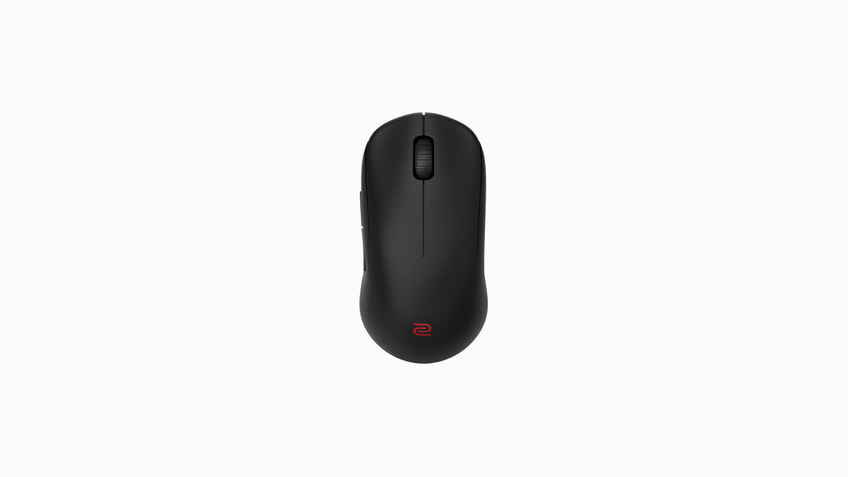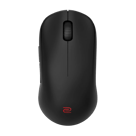Introduction
When the ZOWIE U2 released around a year ago, our reviewer noted that it seemed to serve as a good testing platform for ZOWIE to implement more modern features in their mice. Now, the next iteration of the U2 is available. The new DW version introduces the implementation of a 4000Hz polling rate option thanks to the inclusion of a 3950 sensor. Read our full ZOWIE U2-DW review to find out whether or not this mouse is a good option in today’s market.
At A Glance
ZOWIE U2-DW
Used by 5 players ()If you use a claw grip and you’re looking to try a new mouse, you have to take a look at the U2-DW.
Pros
- Great, interesting shape
- Great build quality
- Comes with a charging dock and an extra (1000Hz receiver)
- Good coating
- Tons of extras in the box
Cons
- Battery life isn’t good (this gets negated by the included charging dock though)
- Lack of optical switches might be a dealbreaker to some
Specs
| Sensor | PAW3950 |
|---|---|
| DPI | 400, 800, 1000, 1200, 1600, 3200 |
| Polling Rate | 125 / 500 / 1000 / 2000 / 4000 Hz |
| Button Switches | Huano |
| Connection | Wireless |
| Shape | Ambidextrous |
| Length | 12.3cm |
| Height | 3.8cm |
| Weight | 60g |
| Width | 5.8cm |
First Impressions
Packaging
Inside the box of the ZOWIE U2-DW, you will find:
- The mouse itself
- A quickstart guide
- The 4KHz enhanced receiver (which doubles as a charging dock)
- A set of replacement speed mouse skates
- A set of alternative control skates
- A 1000Hz dongle, along with a dongle extender
- User documentation
- USB-C to USB-A cable for charging
I personally love all the included extras. ZOWIE mice are priced at the top end of the market, but you do get a lot of bang for your buck. Aside from the two sets of extra feet, you also get two receivers. Sure, one is only good for 1000Hz, but that doesn’t really matter if you’re using it for more casual gaming or just for work.
In terms of the included extras, other brands can learn a thing or two from ZOWIE.
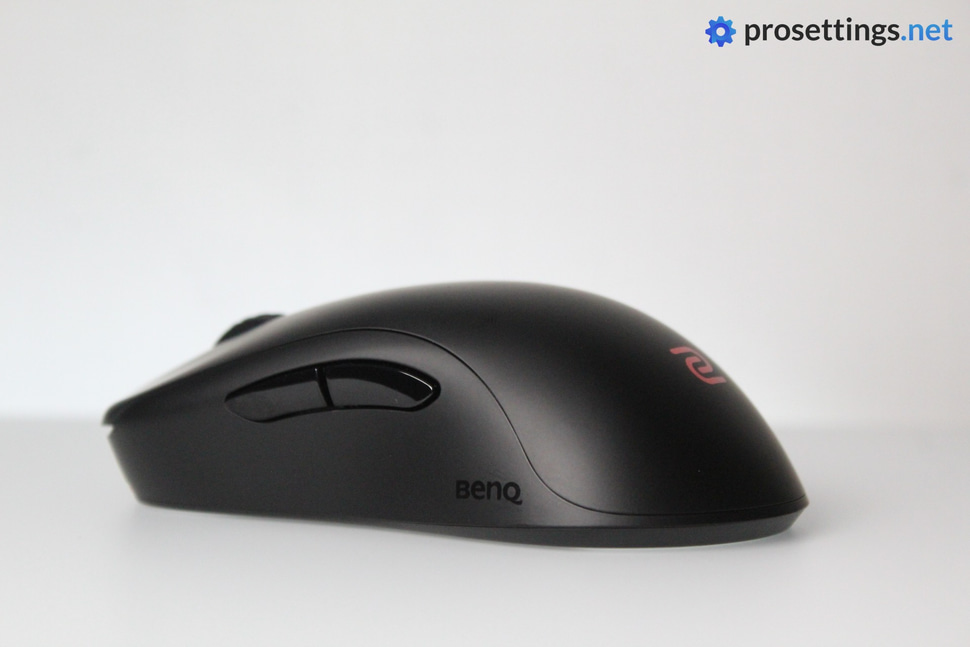
The Mouse
ZOWIE mice are (aside from a handful of special editions) only available in black. Branding is kept to a minimum, with a small ZOWIE logo towards the back of the mouse. On the left side, there’s a barely visible ‘BENQ’ logo as well.
Also notable is the total lack of holes or RGB. This is a mouse that you could easily use in an office or productivity setting without anyone batting an eye.
Shape, Coating, and Mouse Feet
My hands are 18×10.5cm and I use a regular claw grip.
Shape
The ZOWIE U2-DW has a very interesting shape. In my eyes, the U2 is a marriage of two different styles of ambidextrous mice: a small and nimble one, and a larger, more filling mouse.
The U2 has all of the features of a rather traditional ambidextrous mouse, aside for one aspect: the middle. Relative to the overall length and size of the mouse, the grip section gets extremely thin on the U2-DW. This leads to an extremely interesting grip experience.
For me, the U2-DW feels like if I took a mouse like the ZOWIE S2 or even the Logitech G Pro X Superlight and gave it a good squeeze in the middle. Most mice this size have rather flat sides and, if they have a cutout for the thumb, it’s rather limited. That’s not the case here, as the middle section goes quite deep into the shell.
Put simply, small mice give you a lot of maneuverability at the cost of stability, whereas larger mice give you more stability but aren’t as nimble. The U2-DW feels like it doesn’t make any compromises and just gives you the best of both worlds.
The larger and wider back section fits snugly in the base of your hand and offers stability while swiping and moving, while the thin grip section allows for your thumb and ring finger to be close together, leading to that ‘pen-like’ precision that you get from using small mice. Finally, the hump is rather steep, which gives you some room to move the mouse up and down in your hand (such as when making micro corrections when spraying), thus furthering the maneuverability.
Endgame?
Does all of this mean that the U2-DW has an ‘endgame shape’? Obviously not. Everyone has different preferences, for starters. And for some, this type of shape might feel awkward because it can be a bit ‘jack of all trades, master of none’. It’s stable, yes, but not quite as stable as a big, palm-filling mouse. It’s also rather maneuverable, but not to the same extent as what you’ll get with a mini mouse.
With that said: this is one of the most interesting shapes to hit the market in years if you ask me. And if you’re like me and you often find traditional ambi mice to be too flat on the sides, this is one you have to try out.
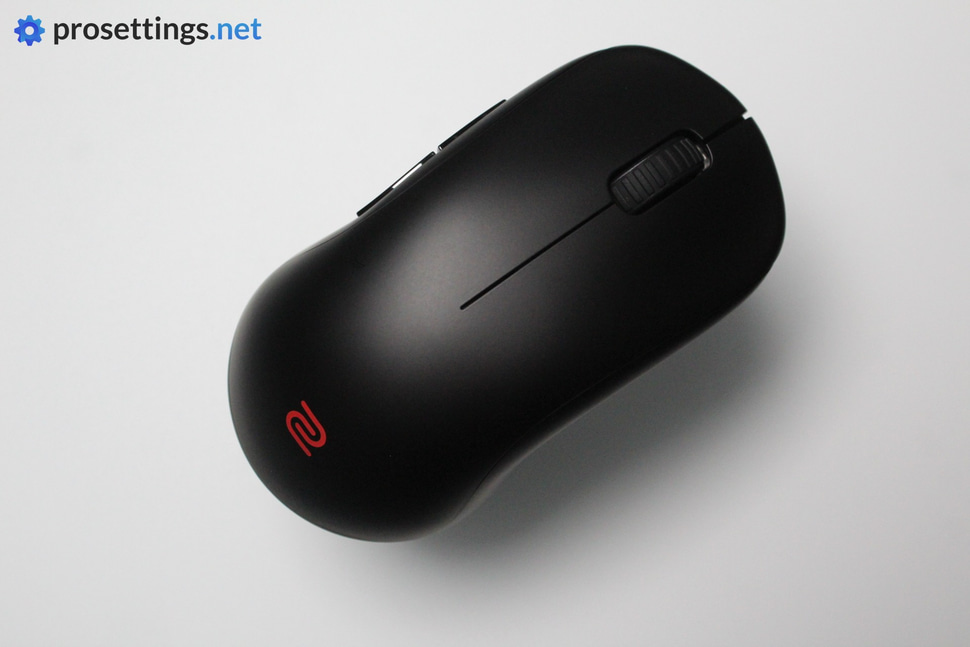
Shape vs Other ZOWIE Mice
In ZOWIE’s lineup, the U2 has a high hump and thin grip width. If you want a similar experience without the thin grip, try the S2. If you want a high hump that’s focused on the back, try the ZA. Finally, if you want a flat and ‘low’ ambidextrous mouse from ZOWIE, you should check out the FK.
Coating
ZOWIE’s coatings are, when it comes to performance, pretty much as good as it gets. My grip is consistent and reliable under all circumstances, and that’s the case for all recent ZOWIE mice I have tested.
My only gripes that I have with their coatings are subjective. I personally prefer slightly more textured coatings. I also don’t like how often I have to take out my cleaning cloth, since fingerprints do have a tendency to show up quite easily.
When it comes to the feeling and performance, however, I have absolutely no complaints. The days where ZOWIE mice started feeling like a goopy affair after one or two intense matches are long behind us.
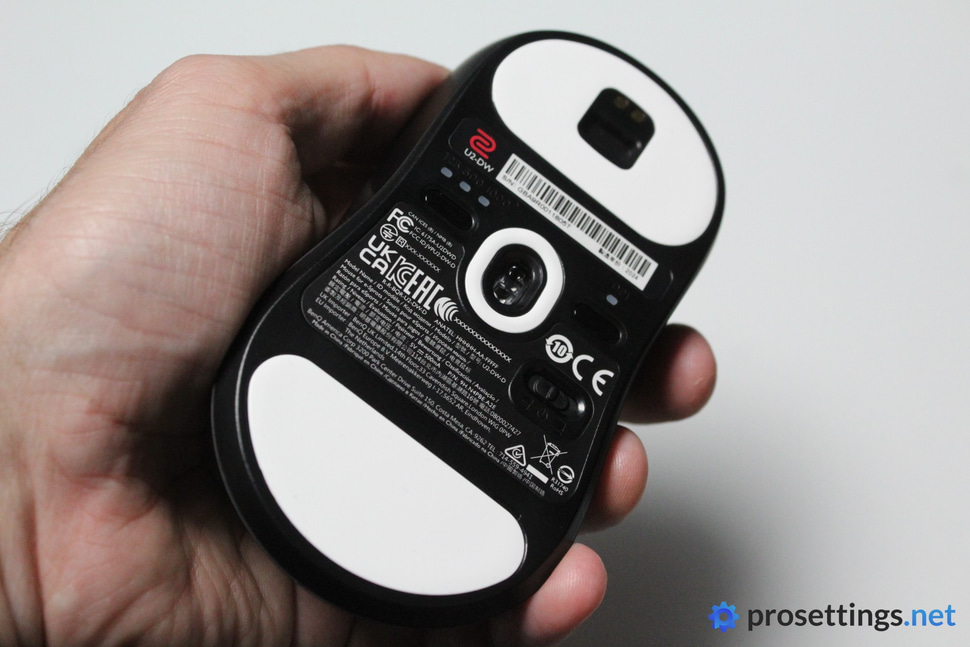
Mouse Feet
Included in the package are two sets of feet. By default, the speed skates are installed. If you don’t like these, you can also go for the controlling skates, which are the same as the stock skates that ZOWIE used on previous models.
What’s good to know here is that the difference between both pairs isn’t that big. The speed skates glide a bit faster and don’t feel as grippy as the black skates, but neither pair veers into the extremes if you ask me. If you want super slick (or super controlling) skates, you’ll have to go aftermarket.
With that said: I have absolutely no problem with the stock ZOWIE feet. They glide smoothly straight out of the box, and I did not feel as if they required any break-in time.
Recommended Grip Types
The ZOWIE U2-DW seems specifically made for claw grip. It can be fingertipped or palmed (depending on your hand size, obviously) but there are better, more specialized shapes for those grips if you ask me. The U2-DW does have a fairly safe shape, so if you want to use a ‘non-optimal’ (everyone has different preferences, so you do you) grip, there shouldn’t be anything holding you back.
Buttons and Scroll Wheel
Buttons
Contrary to what most other brands are doing these days, ZOWIE hasn’t made the switch to optical switches (yet?) but I do really like their implementation of their trusty old Huano switches. As long as the click response time is set to ‘fast’, since they can feel a bit delayed in other modes.
The clicks are a bit more robust and substantial than what you’ll usually find on the market, and I personally like that. If you like very sensitive main buttons, though, it’s probably best to stay away.
Using tried-and-tested mechanical switches, the main buttons actuate with a very crispy and tactile clicking sensation that’s more noticeable than on most optical switches. More importantly, they’re also implemented well. Pre- and post travel are within acceptable ranges, and there is no side play or switch grinding when holding the buttons down.
All in all, this is a really good set of main buttons. Unless you play games where spam-clicking all the time is of the essence, you won’t have any issues with these.
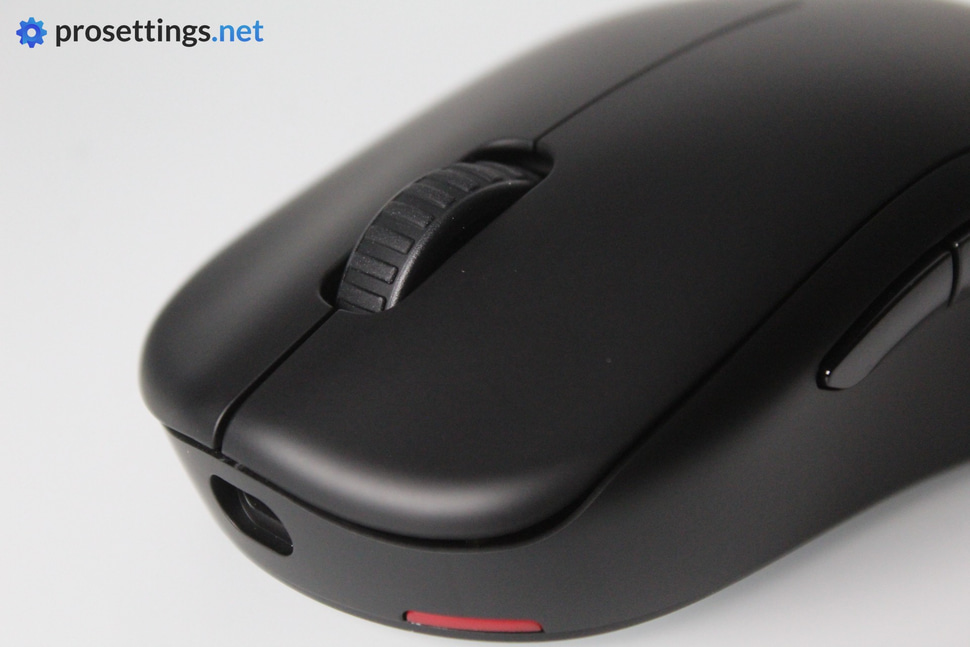
Scroll Wheel
The rubberized scroll wheel on the U2-DW has rather rigid steps and is on the louder side. As such, it’s perhaps not the greatest option for people who do a ton of scrolling for work or play. If you’re scrolling through tons of spreadsheets on a daily basis, for example, this can definitely get annoying.
For most gaming applications, it’s a great wheel though. The rigidity means that it’s easy to distinguish steps in case you use your wheel to switch weapons or something like that, but it’s not so firm that you can’t use it for bunnyhopping. The pressure required to click the wheel itself is also pretty much perfect: I had no issues with accidental scrolls or clicks during my testing.
Side Buttons
Compared to the original U2, the side buttons have been made a little bit thinner. The gap between them has also been made a little bigger so that they’re easier to distinguish by touch. I personally had no issues with the original buttons, but it’s good to see that ZOWIE has listened to the feedback of people who did experience problems.
Both buttons actuate with a pleasing clicking sensation, and there’s no excessive pre- or post travel. I don’t have any remarks here, as this is quite simply a really good set of side buttons.
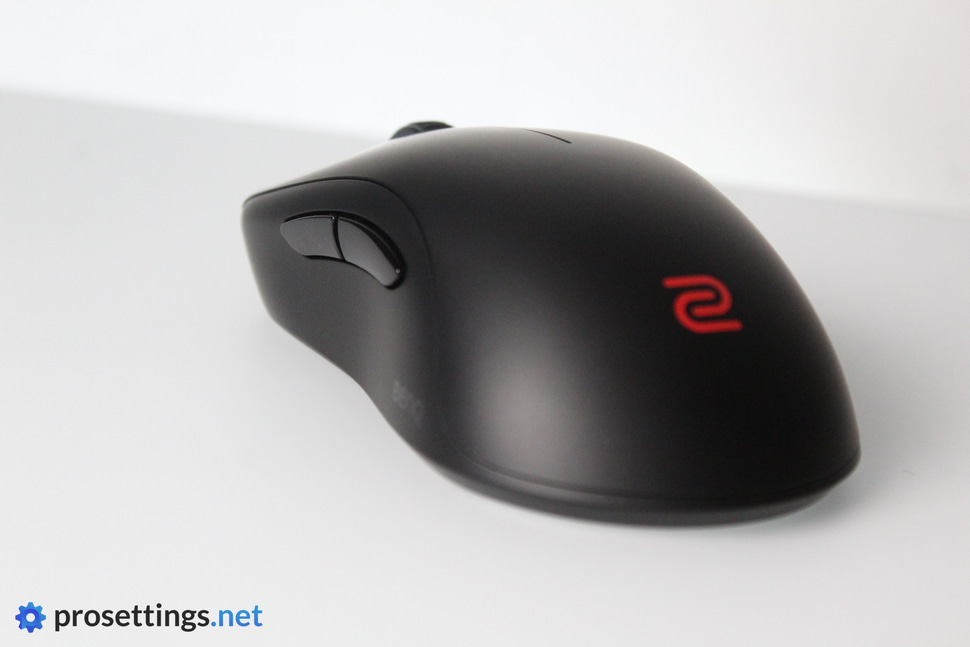
Build Quality
ZOWIE mice have a reputation for being built like tanks, and the U2-DW will not change that reputation. This is a mouse that’s made to survive multiple rough LAN trips, and it really does feel that way. It doesn’t flex, creak, or make any sound when I try to get something out of it, and the entire shell feels consistently sturdy and reliable.
It’s becoming a recurring theme in this review: I have absolutely no complaints here.
Sensor and Everyday Performance
Sensor
One of the main points of criticism when the U2 came out around a year ago was the fact that it only went up to 1000Hz. Not because playing at higher polling rates makes you a gaming beast (the differences can be there, but they’re small) but because it was a mouse from a premium gaming brand that only went up to 1000Hz at a time when 4000Hz was definitely becoming the norm.
With the U2-DW, that has now been fixed. This newest version houses the 3950 sensor (today’s best option) and is capable of polling rates up to 4000Hz. Whether or not that’s going to make a major difference on your gameplay is dependent on your overall setup and how perceptible you are to these things, but it’s good to see that the option is there.
When it comes to implementation, everything is fine. I don’t see any sensor issues in my testing, and the mouse responded accurately and consistently throughout my testing period.
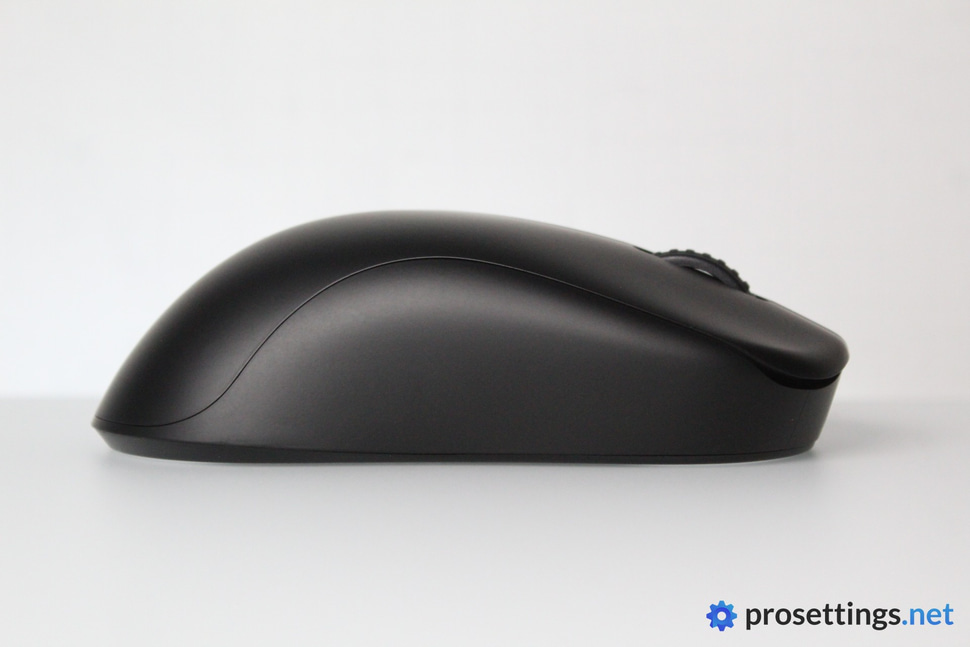
Configuring The Mouse
Until further notice, all ZOWIE mice are plug-and-play, and there’s no optional software available. This means that all adjustments (DPI, LOD, …) have to be made by pressing physical buttons on the mouse, and that creating intricate macros or rebinding keys isn’t possible.
Personally, I have nothing against this ‘no software’ approach. As a reviewer, I can get really fed up with having to download yet another (sometimes very bulky) driver program, so I appreciate the simplicity. For (semi) pro gamers, it’s also handy to know that you just have to plug in your mouse and it’s good to go at your preferred settings.
However, it would be cool to see a very basic lightweight (or even web-based) customization tool. There, people could configure basic macros, change to uncommon DPI settings, and so on.
Battery Life
In theory, the battery life of around 24 hours at 4000Hz is not very good.
However, thanks to the included charging dock, the battery life of the ZOWIE U2-DW is almost endless in practice. When you’re done gaming (or even when you’re taking a quick break), simply place the mouse on the dock and it’ll charge.
I’ve been testing ZOWIE DW mice for months. I also mained the EC3-CW for quite some time, and I never got close to having an empty battery.
Many people consider the addition of a charging dock to be a somewhat gimmicky thing, but I don’t. In a time where more and more devices are going wireless and 4000Hz mice (which drain battery way quicker than mice set to 1000Hz) are becoming commonplace, it’s a relief to have a handy charger for your mouse. This way, the ZOWIE U2-DW doesn’t become yet another wireless device with a battery life that I have to keep track of.
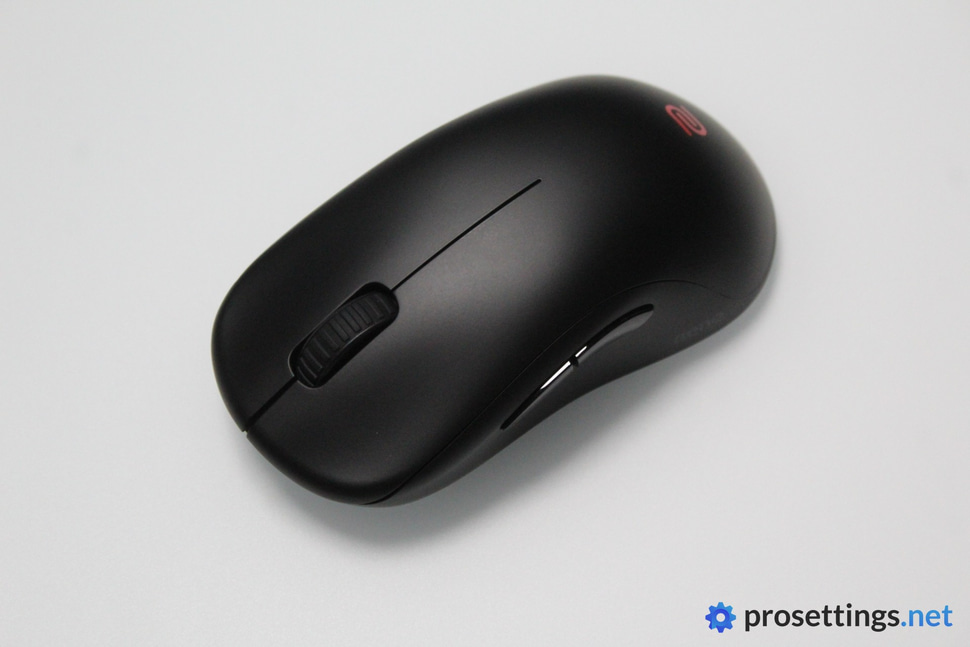
Alternatives
The ZOWIE U2-DW has quite a unique shape, so there are no 1:1 replacements to consider if you ask me. Obviously, there is the regular ZOWIE U2 though.
ZOWIE U2-DW vs ZOWIE U2
In terms of shape, both mice are exactly the same, save for one minor thing. The original U2 had a back slope that continued all the way to the bottom of the mouse. This, according to ZOWIE, caused the mouse to dig in to the pad or palm on downward movements for some users. As a consequence of that, the U2-DW now has a rounded-off section where the back slope meets the base of the mouse.
In terms of performance, the U2-DW obviously has the U2 beat since it can go to 4000Hz. However, if that’s not a concern to you, the original U2 performs the exact same as its successor. Aside from the sensor, there are no major internal differences between the two mice.
See our ZOWIE U2 review
Conclusion
The ZOWIE U2-DW is one of the most interesting wireless gaming mice to hit the market in recent memory, but not because of any technological revolutions. The shape is truly unique, offering a hybrid between stability and maneuverability. That was also true for its predecessor (the ZOWIE U2) but that was handicapped by a lack of higher polling rate support.
With the addition of 4000Hz, ZOWIE brings their latest shape in line with the industry’s most performance-focused offerings.
Combine that shape with a fantastic build, solid click implementation, a good default skate setup, and a functional charging dock, and you’ve got a real sleeper hit.
To me, the ZOWIE U2 was a criminally underrated mouse, and I hope that the release of this more modern-specced DW version brings it to the attention of more gamers. If you use a claw grip and you’re looking to try a new mouse, you have to take a look at the U2-DW.
This product was received for free from the manufacturer and given to our reviewer to test and review. Brands and manufacturers have no editorial control over our reviews. For more information, check out our review FAQ.


